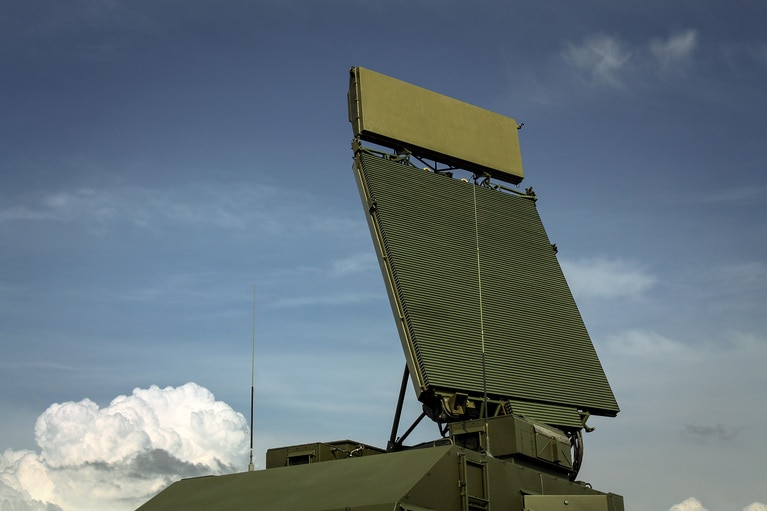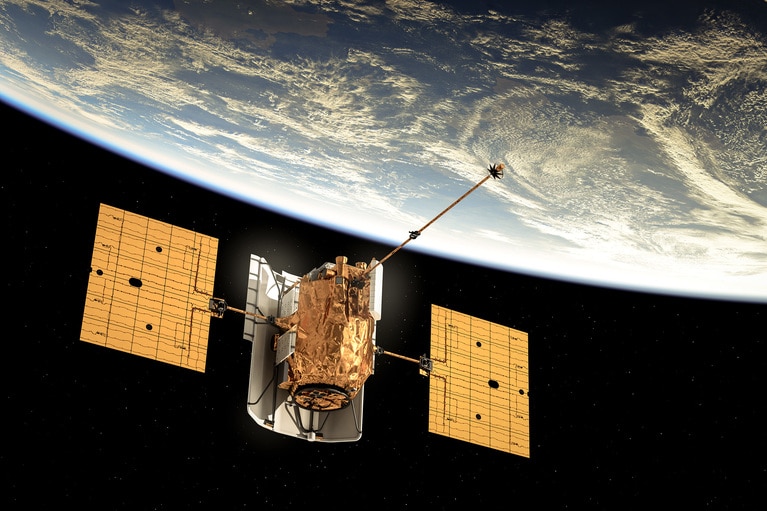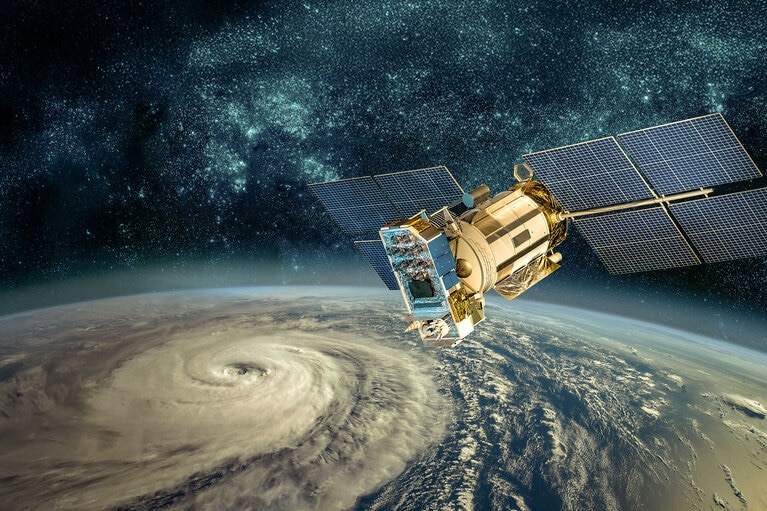
使用 MOSA、SOSA 和 VPX 开放式架构的未来标准化防御平台
使用 MOSA、SOSA 和 VPX 开放式架构的未来标准化防御平台
Vicor 为常用的太空与卫星专业术语提供方便实用的汇编。
描述带电粒子能量损失的非线性曲线,其峰值出现在粒子停止时。能量损失与材料类型、粒子种类及其能量有关。高能粒子的线性能量传递(LET)低于相同种类低能粒子的 LET。
由于太阳磁场变化而抛射出的富含质子的等离子体,速度在 250~3000 km/s 之间,到达地球需要数小时至数天。
单位面积上接收到的粒子数量,单位为 n/cm²,即粒子通量随时间积分的结果(通量 × 时间)。
单位面积上每秒通过的粒子数量,单位为 n/cm²·s。
高能光子,属于电磁波,能够电离物质,通常由放射性衰变产生(如 60Co 源常用于总电离剂量[TID]测试)。
地球同步轨道是一种特定的地球轨道,距离地球 22,236 英里(35,786 km),卫星速度(11,052 km/h)与地球自转同步,完成一次轨道旋转需 24 小时。地球同步轨道卫星保持在地球上空固定位置。与低地球轨道(LEO)卫星和中地球轨道(MEO)卫星相比,许多地球同步轨道卫星暴露于较高辐射水平,需设计以承受更恶劣的环境,它寿命较长,适用于气象监测和全球通信等应用。
与更接近圆形的低地球轨道(LEO)或中地球轨道(MEO)不同,高椭圆轨道具有更高的偏心率,因此在星座通信网络等传统卫星应用中较为少见。高倾角的 HEO 卫星在高纬度地区上空有较长的驻留时间,因此比 GEO 轨道更适合高纬度地区的通信。
指具有足够能量的亚原子粒子(质子、电子、中子、离子)或电磁波(X 射线或伽马射线)通过剥离原子中的电子而产生电离作用。
指电离粒子在穿过物质时每单位距离传递的能量,单位为 MeV/cm。LET 与物质密度相关,针对硅材料时,常使用衍生单位 MeV·cm²/mg 表示。
低地球轨道是指距离地球 1,200 英里(2,000km)或更近的轨道,速度为 25~28 km/h,轨道周期为 128 分钟或更短。由于轨道高度较低,LEO 卫星的“地球覆盖范围”较小,因此服务区域有限。
中地球轨道是指围绕地球的特定轨道,位于 LEO 和 GEO 之间,距离地球 1,200 英里~22,236 英里(2,000~35,786km),速度为 28~11,052km/h,轨道周期为 2~24 小时。由于高度增加,MEO 卫星比 LEO 卫星有更大的“地球覆盖范围”,因此服务区域更广。
辐射吸收剂量单位,等于 0.01 戈瑞(国际单位制)。
抗辐射电子元件指经过特殊设计、制造和测试,能够在特定辐射环境中可靠工作的电子元件。这类设备通常需通过严苛的总电离剂量(TID)、中子或质子位移损伤(DD)及单粒子效应(SEE)测试,以模拟实际工作环境,常用于航天器、核反应堆和粒子加速器的设计,因为它们将暴露在高水平的辐射下。
抗辐射电子元件需通过特定的筛选流程,符合政府制定的标准。这些标准通常要求采用密封封装,以确保较长的使用寿命。这些设备具有更高的可靠性和更长的使用寿命,因此主要供航天机构、私人航天公司、国防部门及科研人员使用。
耐辐射电子元件指经过特殊设计、制造和测试,能够承受特定水平辐射负面影响的电子元件。与抗辐射元件的一个关键区别是,耐辐射元件无法承受抗辐射元件所能承受的辐射水平。但是,与未经辐射评级的商用现货(COTS)产品不同,耐辐射部件是为在辐射水平较低的环境中工作而设计的。由于轨道较低、任务时间较短、可靠性要求更低,低地球轨道和中地球轨道卫星越来越多地使用耐辐射部件。
在 MOSFET 功率晶体管中,寄生双极结构被触发,伴随再生反馈、雪崩效应和高电流状态。除非有适当的保护措施,否则 SEB 具有潜在破坏性。通常,使用 1E5 ions/cm² 的粒子注量进行 SEB 测试。
单个高能电离粒子撞击电路中的敏感节点,引起可测量的软或硬错误。单粒子会导致电离,可能影响 TID,这可能是测试期间需要考虑的一个因素。
指导致元件复位、锁定或其他功能异常的软错误,通常发生在具有内置状态/控制模块的复杂设备中,如 SDRAM、DRAM、NOR/NAND 闪存、各类处理器、FPGA 或 ASIC 或混合信号设备中。根据恢复可操作性所需的操作,SEFI 可分为软件复位或电源循环两种类型。存储的数据可能会也可能不会丢失。通常,使用 1E7 ions/cm² 的粒子注量进行 SEFI 测试。
单离子撞击引起的栅氧化层或其他电介质层的破坏性击穿,会在偏压下产生漏电流,常见于功率 MOSFET、线性集成电路(带内部电容器),或在数字设备中表现为固定位。通常使用 1E5 ions/cm2 的粒子注量进行 SEGR 测试。
在电离粒子作用下,设备进入永久且可能具有破坏性的状态,即离子撞击触发寄生晶闸管结构,并形成低阻抗、大电流路径,常见于 CMOS 电路中。如果电流过大,可能会造成破坏。这种大电流状态可以锁定,通过断电复位。通常情况下,在设备的最高额定温度下使用 1E5 ions/cm2 的粒子注量进行 SEL 测试。
单个高能粒子撞击逻辑或线性集成电路节点,引起暂时的电压突变(电压尖峰)。这属于软错误。
单粒子引起一个或多个晶体管的状态改变。这种状态变化可能导致逻辑或存储错误。单粒子翻转是非破坏性的,可通过重写或复位逻辑元件恢复。这属于软错误。通常,使用 1E7 ions/cm2 的粒子注量进行 SEU 测试。
太阳间歇性爆发的电磁能量,通常与日冕物质抛射相关。电磁辐射覆盖从无线电波到伽马射线的全波段。太阳耀斑的频率以 11 年为一个周期。
太阳持续释放的带电粒子流,主要包含质子、电子和 α 粒子,以及微量的较重离子,速度为 300~700km/s。
指足以引起辐射效应的最小 LET 值。在设备测试中,通常使用 1E7 ions/cm2 的粒子注量,以确保覆盖敏感节点。
长期辐射吸收剂量的测量指标,单位为拉德(rad)或戈瑞(gray)。
使用 MOSA、SOSA 和 VPX 开放式架构的未来标准化防御平台
使用 MOSA、SOSA 和 VPX 开放式架构的未来标准化防御平台
为新太空应用提供更高的功率密度和低噪声
为太空通信应用提供最佳功率和低噪声所需的专利电源设计技术和架构
Spacechips 大电流处理器为在轨 AI 驱动通信供电
小型卫星亟需具备精密计算能力。了解更多低噪声、AI 赋能的电源如何推动创新应用
电流倍增器:为 AI 处理器及其他严苛应用供电的明智之选
AI 处理器需要解决低电压、高电流的严苛挑战,这将会导致电源系统设计产生瓶颈。了解 Vicor 的电流倍增技术如何改变这一现状



